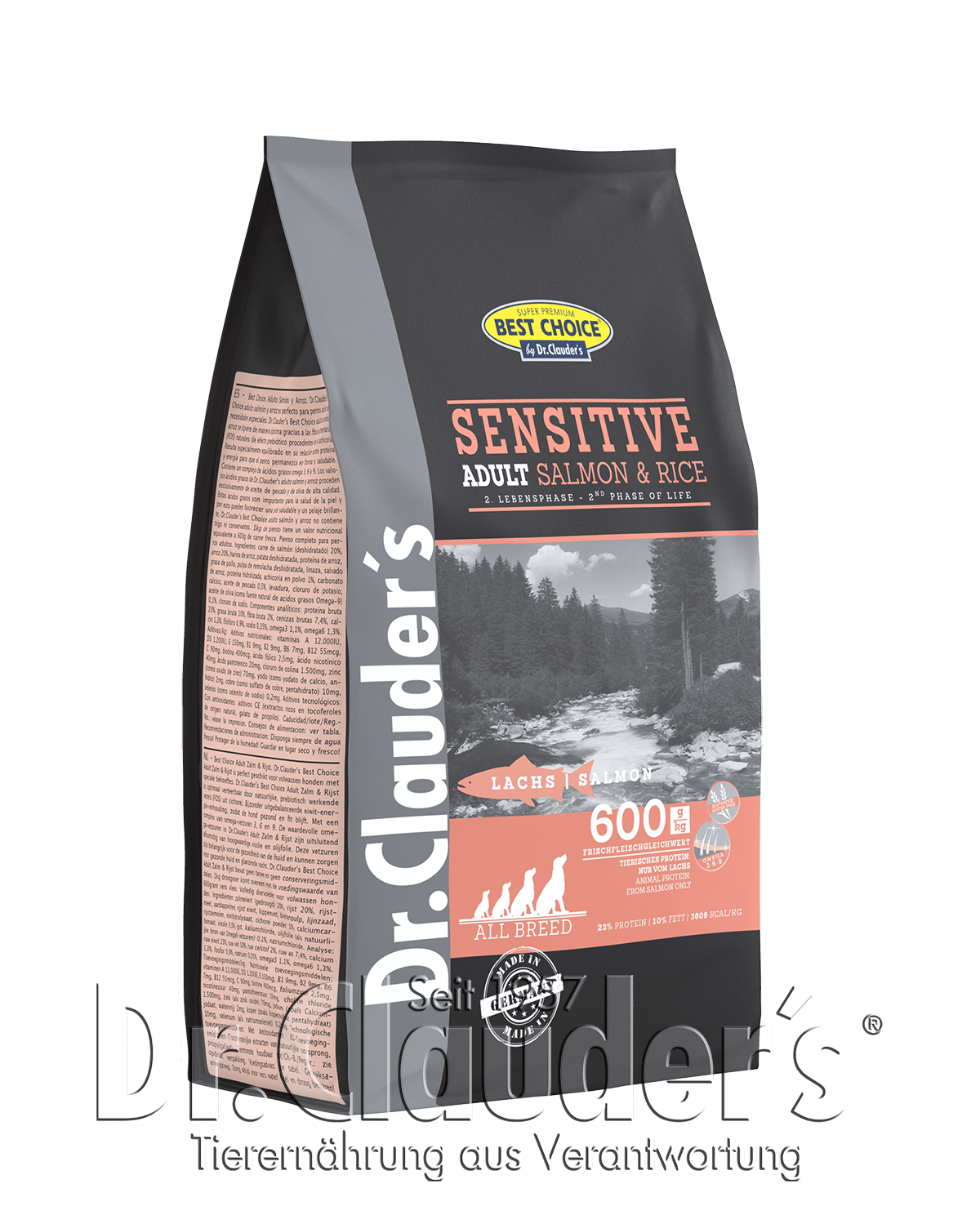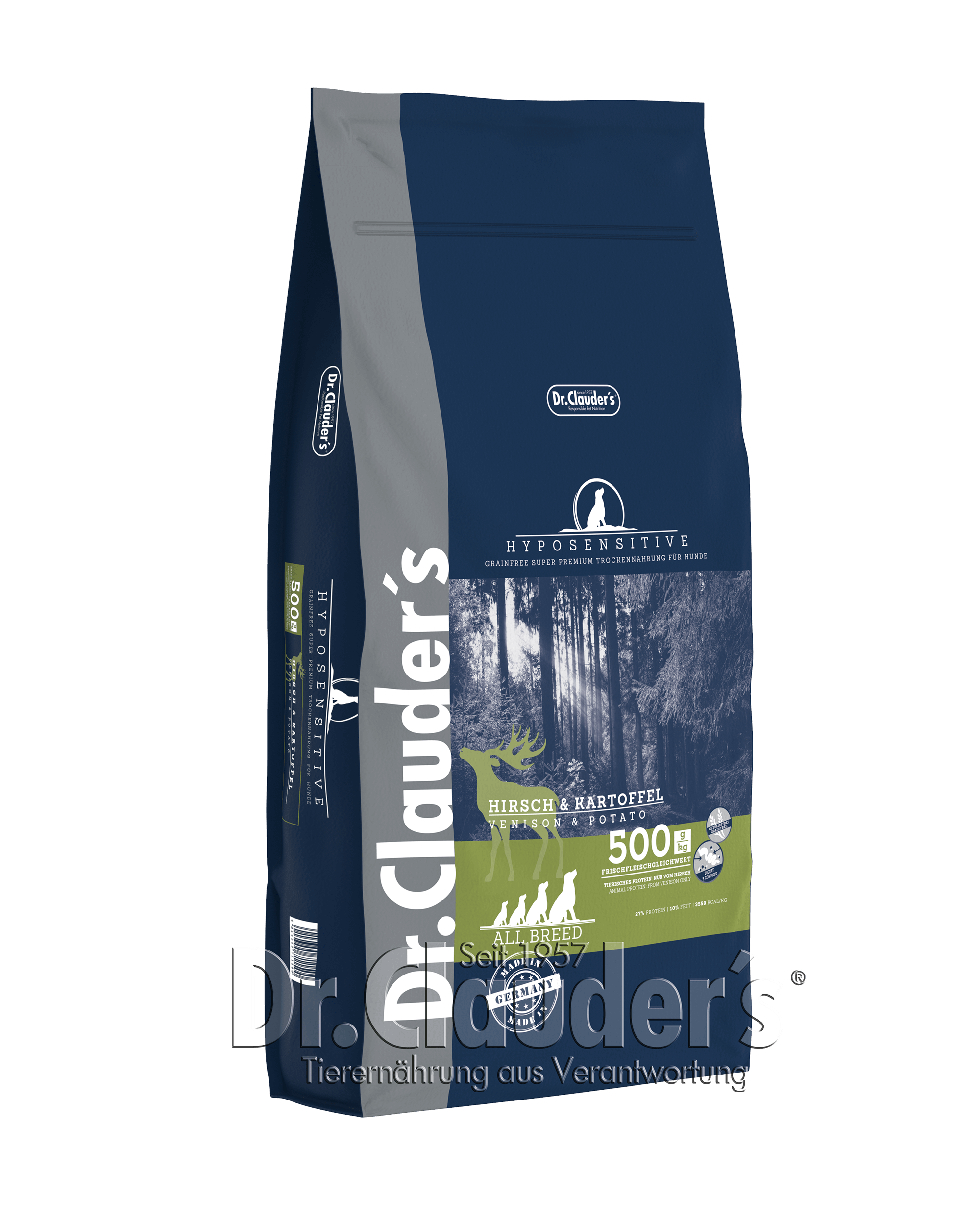Included in this article:
- Symptoms
- Intolerance or allergy?
- Trigger
- Exclusion diet
- Points to note
- Product tips
Food intolerance or allergy in dogs
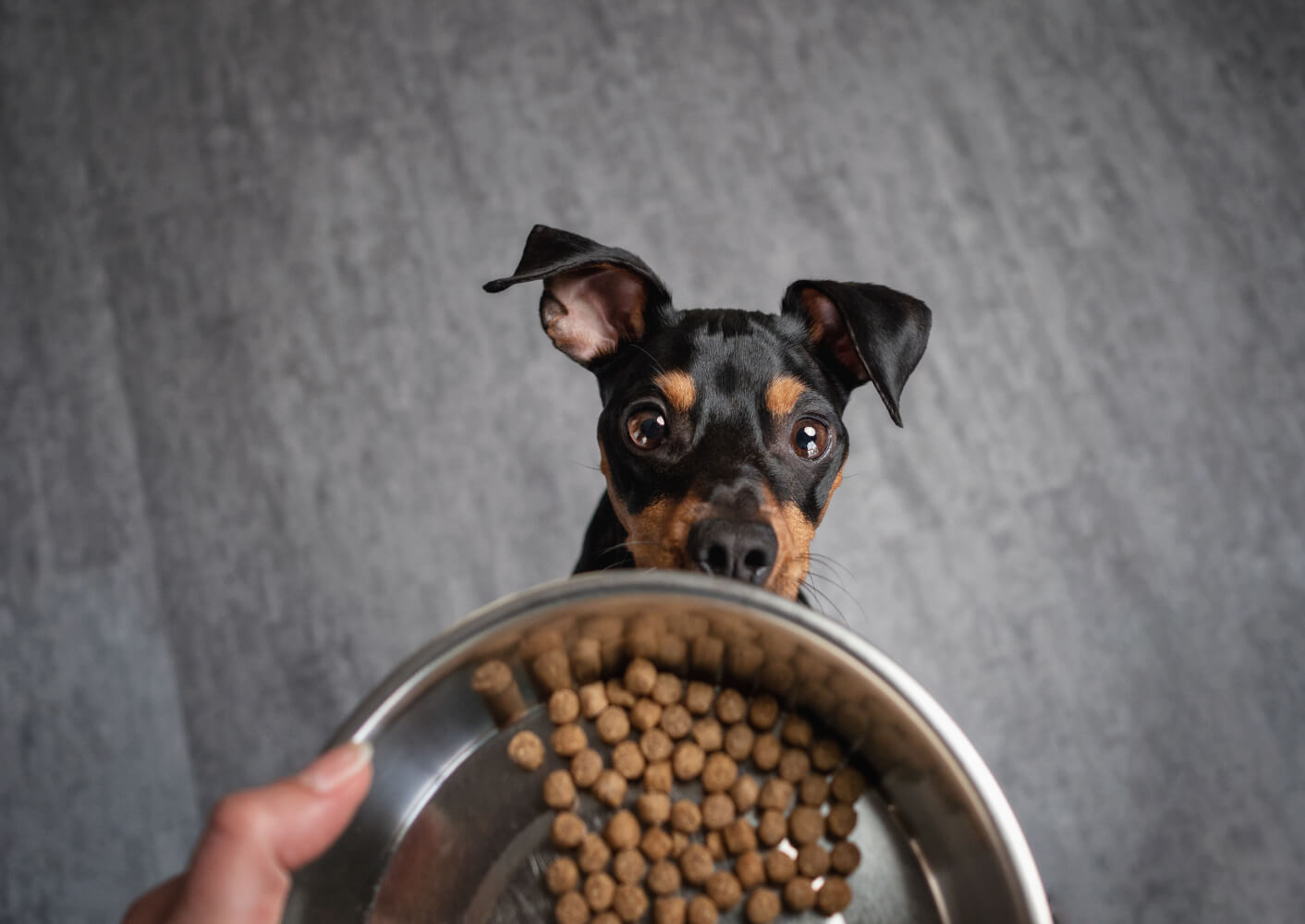
Nutrition needs harmony - a balanced dog diet is vital for our four-legged friend. In order to stay healthy and vital, your pet needs a balanced diet:
- Ingredients that are balanced with each other
- not only muscle meat and offal, but also vegetable food, animal and vegetable fat, minerals, trace elements and vitamins.
A good dry and wet food covers these areas and provides your dog with optimal nutrition. But what to do if your dog has the following symptoms despite a balanced diet: Itching, flaky/inflamed skin, diarrhoea or paw licking?
These could be signs of an allergy or food intolerance. For you as a dog owner, it is a challenge to interpret the signs correctly, because the symptoms can also occur with other diseases or parasites.
In this article you will learn how to interpret the symptoms correctly, which tests you can carry out and how you can help your pet.
Symptoms of food intolerance or allergy
Food intolerance or allergy is the third most common cause of discomfort in dogs. On the surface, they show the same symptoms - these include:
- Itching
- scratching
- Open skin
- Inflammation of the skin
- diarrhoea, flatulence and abdominal cramps
- Increased defecation
Intolerance or food allergy: What is the difference?
Only on the basis of clinical symptoms such as itching, diarrhoea, skin inflammation, etc., allergy and intolerance cannot be distinguished, as they manifest themselves symptomatically in the same way. Image suggestion
Intolerances in dogs
True food allergies occur less frequently in dogs than intolerances. A food intolerance is a hypersensitivity reaction in which the dog's own defence system is not involved. The reasons can be different - for example, a lack of enzymes can be the trigger for a hypersensitivity reaction. In this case, the organism is unable to digest certain components of food (example: gluten intolerance). The symptoms become more severe the higher the dose of the substance.
Food allergies in dogs
A true food allergy is a severe reaction caused by the immune system to components of food that are actually harmless. The organism forms antibodies to certain protein structures in the food. The veterinary clinic can detect these by means of a blood test. The reaction will then always occur when your dog comes into contact with this food. Even the smallest doses of the allergen are enough to provoke an immune response.
What is a cross-allergy?
If a dog suffers from an allergy, the antibodies formed on the allergen can recognise so-called epitopes - structures made of proteins and sugar compounds. If, for example, a fruit to which the dog is allergic contains a molecule with similar epitopes to the actual allergen, the antibodies can also dock onto these similar epitopes and cause an allergic reaction. For example, "banana allergy sufferers" can have an allergic reaction if they eat a kiwi shortly afterwards.
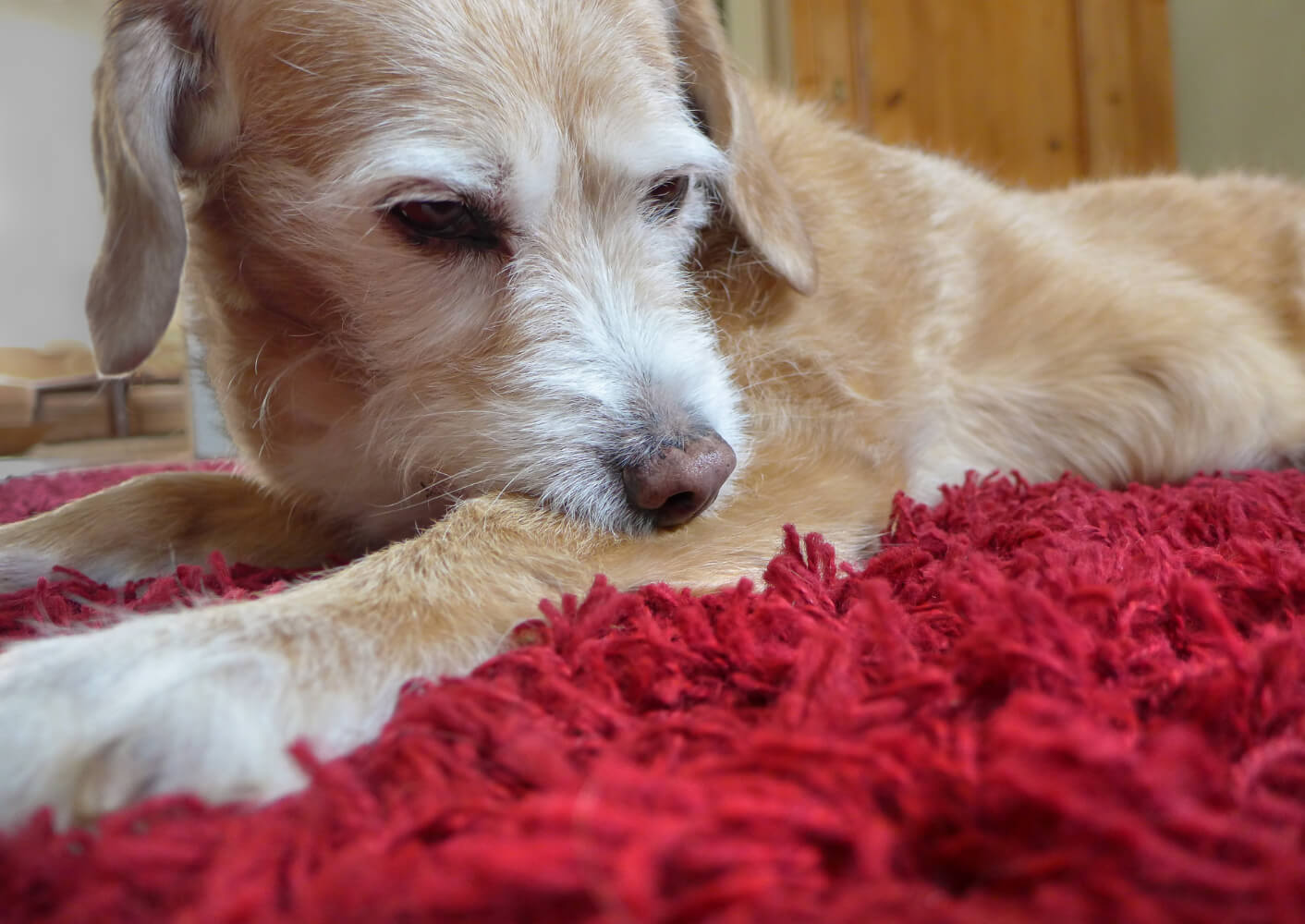
Triggers for food allergies and intolerances in dogs
Triggers of food allergies or intolerances are proteins of vegetable or animal origin, i.e. protein components in the food. In rare cases, a carbohydrate source can also be the reason. Every protein in the feed is potentially capable of triggering an allergic reaction, a subsequent cross-allergy or an intolerance.
The following ingredients are most commonly found in conventional feeds and are therefore the most commonly consumed food ingredients. Therefore, they are at the top of the list of the most common triggers for food allergies in dogs:
- Chicken
- Beef
- Cereals
- Rice
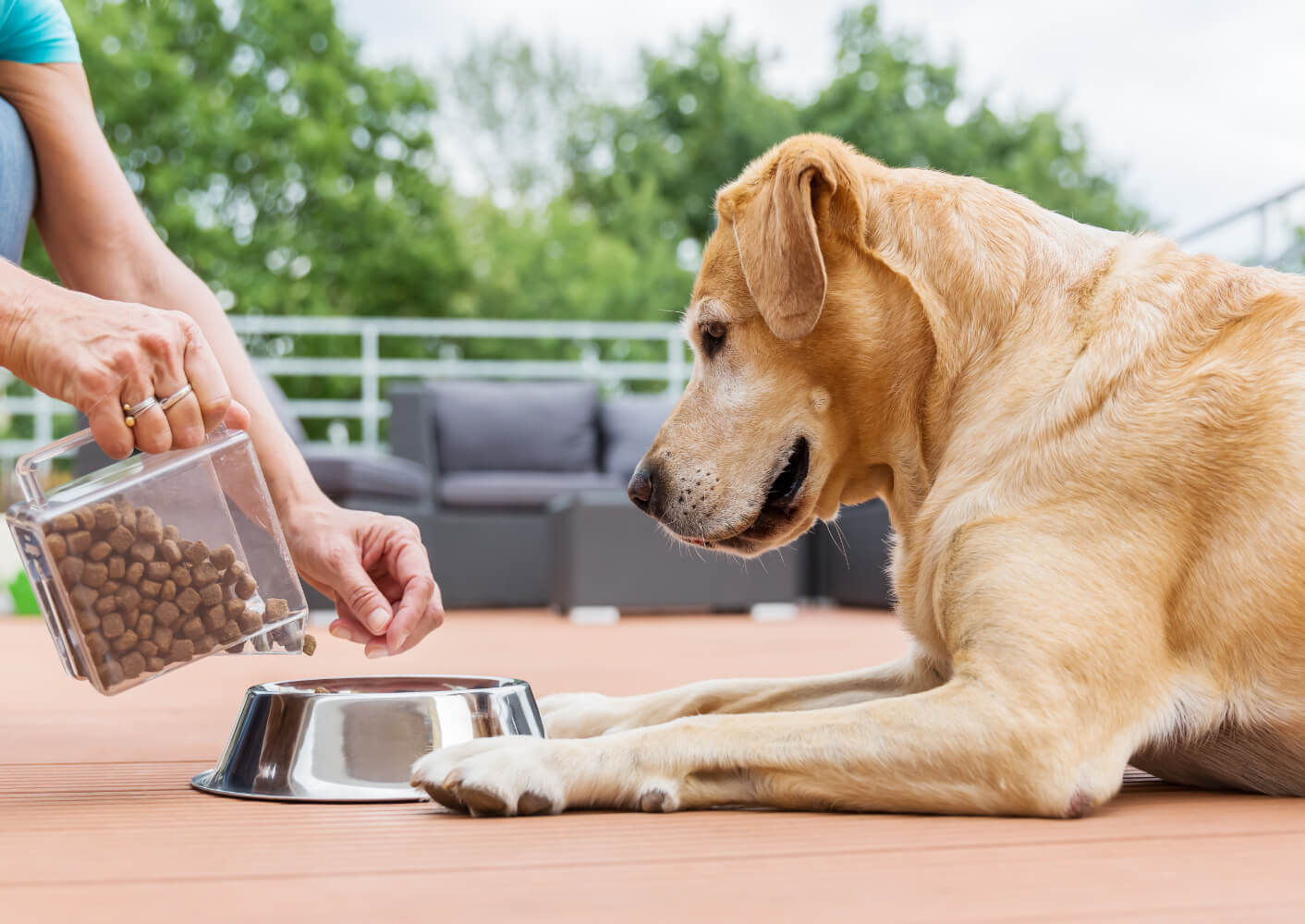
Recognise and act on intolerances and food allergies - the exclusion diet.
The best therapy for food allergies or intolerances in dogs is to avoid the triggering food ingredients. But which ingredients are these and how can you expose them? The exclusion diet is now the best way to help your pet: All foods that have already been fed must disappear from the menu for the time being. Sounds simple? In practice, many owners find it difficult to implement. We show you how it works.
Important in advance: The veterinary clinic must rule out other forms of allergy such as flea bite allergy, an environmental allergy, infections, parasite infestation or a certain deficiency (e.g. zinc deficiency) as the trigger for the symptoms. If this is the case, the vet will advise an elimination diet.
Important factors in the exclusion diet:
- Choosing the right food: The animal is offered only one protein source and one carbohydrate source for a certain period of time. For this, high-quality complete food for allergic dogs must be fed. Unfortunately, it is not enough to feed a dog food called "lamb and rice", for example. This is because it does not guarantee that such a food contains only lamb. Producing a good complete food is time-consuming and it must meet certain quality standards. For example, the raw materials must be purified so that they are not contaminated with proteins that your dog cannot tolerate.
- Find the allergy-causing "culprit": By gradually eliminating ingredients, you can find out what your dog can't tolerate.
- Stay consistent: During the diet, you should not feed your dog any treats or anything "foreign". Dr.Clauder's offers pure meat snacks: For example, the Hyposensitive Deer dry food can be wonderfully combined with deer snacks.
- Medical evaluation: The effectiveness of the diet can only be determined after about 6-10 weeks. During this time, the vet must rule out a new infestation or infection.
3 steps of the exclusion diet
The exclusion diet is time-consuming, but it's worth it - because you can narrow down exactly which components of the food your dog reacts to.
Here we show you how it works and which Dr.Clauder's foods help your dog.
You should remember this
Dr.Clauder's for sensitive stomachs and allergy sufferers
Whether it's quality wet food with only one animal protein source, gluten-free or grain-free dry food - Dr.Clauder's offers the right food for your sensitive four-legged friend - and is ideal for feeding during an exclusion diet.

